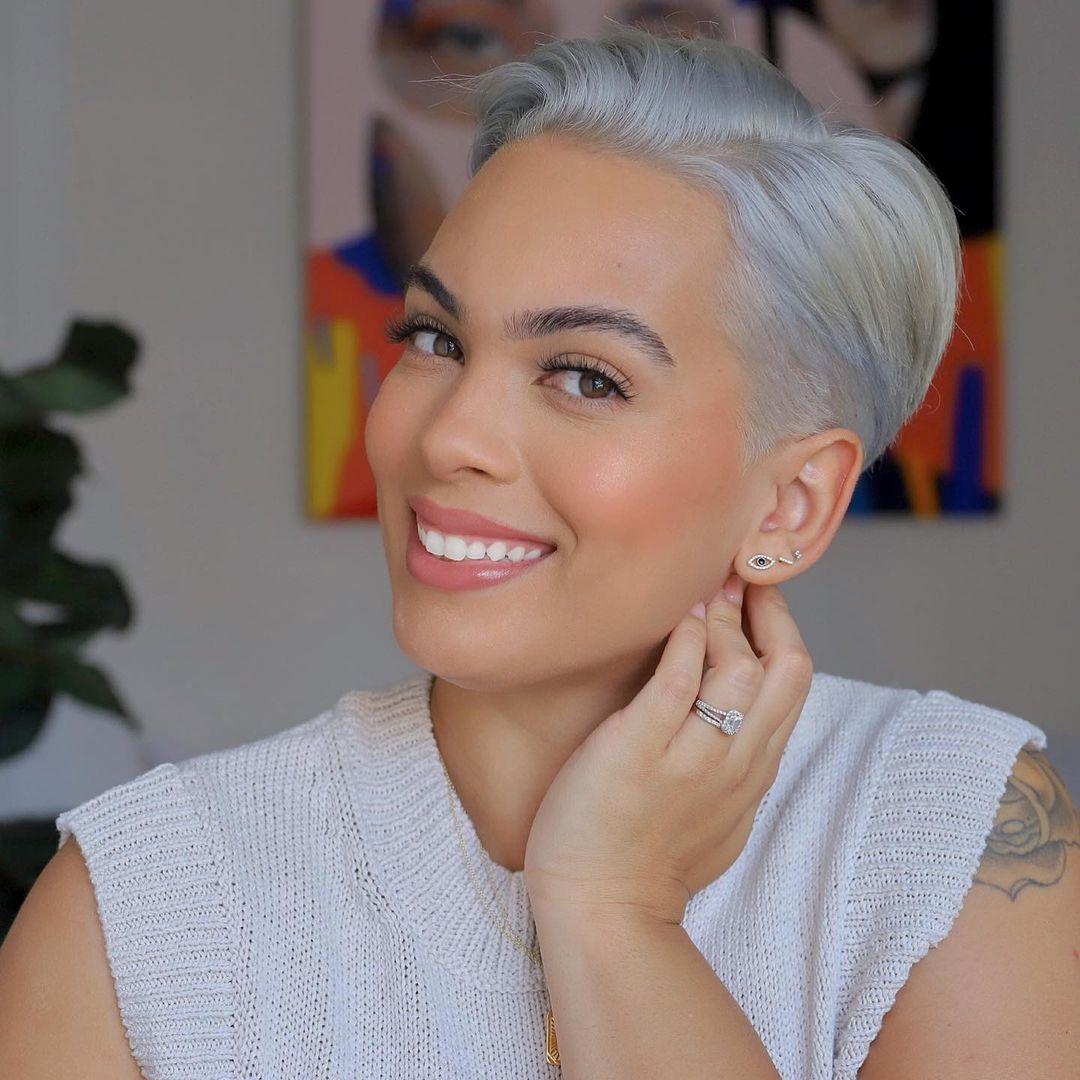+ Why Is Save Me From Encouraging Every Household Be Trained in QPR?

An Iconic Bridge + An Important Story
There is a story of an iconic bridge with at least 1,000 documented suicides (having at least two eyewitnesses). What’s the place? The Golden Gate bridge. The first suicide on this bridge happened shortly after the bridge was completed. For years, there were controversies over this bridge and what could be done to prevent suicides. Bridge authorities once said they didn’t want to put telephones or signs on the bridge because they didn’t want to put the idea of suicide in their head. The reason why we’re so fearful to talk about the subject of suicide is that we believe that if we talk about suicide with those we’re concerned about, is that somehow it will put the idea of suicide in their mind. If you’re concerned by someone who you think may be suicidal, the chances are that if the thought of suicide has already crossed your mind for them, its already crossed their mind.
The bad news is over 1000 people have died jumping from the Golden Gate bridge. The good news is that if those people are stopped, counselled and offered help, they wouldn’t go on to take their lives.
Dr Paul Quinnett, a clinical psychologist, director of his local crisis hot line for 15 years and creator of the QPR method of suicide prevention, told this story and continued to talk about a suicidologist living in the bay area who had researched people who were restrained from jumping. In one of his research series, 515 people were stopped before they jumped and then followed for two years after the crisis. Of those 515 people, only 5% went on to die by suicide. The other 95%, if restrained did not go on to die by suicide. They survived. If given the opportunity to get help, to have hope, almost all will choose life.
By being courageous and intervening in the life of someone who may be on a journey of self destruction, you can do something. You can help. You can bring a dramatic change and give someone an opportunity to live their lives.
Experiencing Loss and Finding Support

Losing someone to suicide or struggling with a mental health conditions can feel like no one understands what you are going through. Unlike other illnesses, it is difficult to look at someone and know their connection.
The American Foundation for Suicide Prevention’s Out of the Darkness Walk is a journey to remember and unite. It is a time to acknowledge the ways in which suicide and mental illness have affected our lives and our loved ones. We all wear honor beads, with each color showing our personal connection to the cause and helps us identify others who understand our experience.
What color honor beads do you wear? Our founder, April Peck, wears orange, purple, teal and blue and walks side-by-side with all colors.
- White: Loss of a child
- Red: Loss of a spouse or partner
- Gold: Loss of a parent
- Orange: Loss of a sibling
- Purple: Loss of a relative or friend
- Silver: Loss of a first responder/military
- Green: A personal struggle or attempt
- Teal: Supporting someone who struggles or has attempted
- Blue: Supporting prevention
Mental Health, Effective Treatment + Checking In On Your Friends

We couldn’t say it any better, so we’ll just repeat. We’re on a mission to #savehairsavelives and raise awareness for suicide prevention and mental health!
“Thankfully, the world is changing. We understand mental illness. We understand suicide and we know that treatment saves lives. Right now, our teachers don’t teach us about depression and suicide, and our faith leaders often struggle to talk openly about these topics. Too often, doctors can’t talk to their patients about suicide, even patients who are sitting in their offices planning how to end their lives, perhaps by overdosing on the medication being prescribed to them. The world remains dangerously ignorant about suicide so in order to save lives, we must bring the subject out of the shadows. Effective treatment would save thousands of lives around the world. We must learn to talk comfortably about suicide, and we need your help to start the conversation. Join us in this fight. A fight to save lives.” QPR Institute and the QPR method for suicide prevention.
When was the last time you checked in on your friends and really listened? Talk saves lives and there is a training that exists that can help you overcome your fears when you suspect someone you know is suicidal.
CPR Saves Lives. QPR Saves Lives.

The effective use of CPR doubles or triples ones of chances of surviving a heart attack. When someone shows signs of cardiac arrest, the response of nearby friends, family or coworkers is critical. It’s called bystander rescue.
CPR is lifesaving and I’d be surprised if you aren’t CPR certified. Have you been QPR certified yet?
QPR is an emergency intervention for someone experiencing a life-threatening crisis. QPR, standing for Question, Persuade, Refer, is easy to learn, easy to remember and something you can do. The only thing that’s left after QPR training is being courageous to overcome our fears about reaching out to help someone who may be considering suicide.
The Signs and Cues of a Suicide Crisis

EVERY suicide clue and warning sign needs to be taken seriously.
Do you know what the signs are? The signs can be either direct or coded, and behavioral or situational clues. All are important clues, but the more clues and signs observed, the greater the risk of a suicide.
Some examples of direct clues are:
- -If (such and such) doesn’t happen, I’ll kill myself.
- -I wish I were dead.
- -I’m going to end it all.
Some examples of coded clues:
- -My family would be better off without me.
- -I just want out.
- -Pretty soon, you won’t have to worry about me.
Behavioral clues:
- -Previous suicide attempt
- -Acquiring a gun or stockpiling pills. 51% of all suicides in the U.S. are by firearm (source: AFSP)
- -Co-occurring depression, moodiness, hopelessness
- -Putting personal affairs in order
- -Giving away prized possessions
- -Sudden interest or disinterest in religion
- -Drug or alcohol abuse or relapse
- -Unexplained anger, aggression or irritability
Situational clues:
- -Being fired from work or expelled from school
- -A recent, unwanted move
- -Loss of any major relationship (breakup, death or cherished therapist, counselor or teacher)
- -Diagnosis of a serious illness
- -Fear of becoming a burden to others
Now ask yourself, have you ever heard anyone say something similar to, “I wish I were dead.” Honestly, how did you respond? Were you scared? Did you say, “Don’t say that.” or “You don’t mean that.” Next time, listen to the problem and give your full attention.
Suicide is not the problem. It is only the solution to a perceived insolvable problem.
The Myths and Facts About Suicide

As much as we’d like to believe in them, unicorns aren’t real. Neither are the myths about suicide. Understand the myths and know the facts.
In our founders QPR training, an emergency response training method for suicide prevention, this is what she learned:
How can you help? Ask the question. From the young to the elderly, it’s a relief for those considering suicide to have someone ask.
Be courageous and ask the “s” question.
"Q," The First Step in QPR. Ask the "S" Question.

The “S” Question. The “Q” in QPR. Question.
The question, the “S” question. The question that confirms if your friend is suicidal. The way you ask, is very important.
How not to ask:
“You’re not suicidal, are you?”
This way of asking puts the focus on you, not on them and what they are going through. It’s asking for a “no” response and won’t get you an honest answer.
Here are some things to consider when asking:
- -If in doubt, don’t wait, ask the question.
- -If the person is reluctant, be persistent.
- -Set the setting. It’s best to ask in private to allow your friend to talk freely.
- -Give yourself plenty of time.
- -Have your resources for a referral handy.
Indirect approach to asking:
- -Have you been so very unhappy lately that you’ve been thinking about ending your life?
- -Do you ever with you could go to sleep and never wake up?
Direct approach:
- -You know, when people are as upset as you seem to be, they sometime wish they were dead. I’m wondering if you’re feeling that way too?
- -Are you thinking about killing yourself?
Remember, how you ask the question is less important than that you ask.
"I Want You to Live."
The “P” in QPR. Persuade.
How do you keep your friends safe and stay alive?
- -Listen to the problem and give them your full attention. Remember, suicide is not the problem but instead the only solution they can think of to a perceived insoluble problem.
- -Do not rush to judgement.
- -Offer hope in any form.
Then, ask:
- -Will you go with me to get help? – or – Will you let me help you get help?
The best help you can offer is to pick up the phone, make the appointment for them, and take them to get help. Be the team. Be the support. Help them along their way.
Saying, “I want you to live” can make a world of difference.
The Best Referral is the One YOU Make

The “R” in QPR. Refer.
Assume you’re the only one who will reach out. Help those in crisis connect with someone who can help. Suicidal people often believe they cannot be helped, so you may have to do more. The best referral involves taking the person directly to someone who can help. Save this resource list to your favorites.
QPR is not counseling. It’s not treatment. It offers hope and YOU are the first responder helping them get the help they need.
Suicide IS Preventable

Suicide is the most preventable kind of death. Every positive action may save a life.
Our Founder's Story

Ever hear the saying, “Hindsight is 20/20.” Our founder, April Peck, says it’s a phrase that runs through her mind often, especially in the loss of my sister. Listen to her interview about the loss of her sister, Patty, here. Looking back, she can see there were signs, but she didn’t recognize them nor know how to respond.
The Shocking Statistic That Caused April to Take Action

April never met her grandma due to suicide. April, raised in an abusive home with five sisters, left for college the minute she graduated from high school. She never called or told her parents what college she was going to but one day she felt uneasy and knew she had to call home. It was that day she found out one of her younger sisters was in the hospital after a suicide attempt. Luckily, this sister received help. It wasn't until years later that April's youngest sister, Patty, a mother to three young daughters, would also attempt to take her life and die. Suicide has been a devastating force of tragedy in April's life. After was worried about the lives of her nieces and was shocked to learn that there is a 4-fold increased suicide risk in children when they loss a parent to suicide. This statistic was the final straw that caused April to begin a path that would lead her to founding Save Me From, a hair repair + scalp treatment brand that advocates suicide prevention organizations.
"You can't urn a blind eye. Don’t be scared. If you’re concerned about a friend or someone in your family, talk to them."
There are things you CAN do. There are ways you CAN help. You CAN offer hope.
The first step is to recognize the signs of someone going through a suicide crisis and ask the “s” question, “You look pretty miserable, I wonder if you’re thinking about suicide?”
Your courage can save lives.
More Than September

Close to 800,000 people die due to suicide every year, which equates to about one person every 40 seconds (according to the World Health Organization). Suicide is a global phenomenon that affects every region of the world. It is the third largest cause of death for people ages 15-44. For every life lost, another 25 people will attempt suicide, often causing serious lifelong injury or medical disability. In 2018, suicide was the #10 leading cause of death in the United State with over 48,000 people dying by suicide with homicide ranking at #16 claiming 18,000 deaths. There are indications that for each adult who died by suicide there may have been more than 20 others attempting suicide, this translates to over 1 million attempts a year.
September is Suicide Awareness month and we’re thankful for all those who are joining in, speaking out and educating themselves on what they can do to help.
Don’t stop there – be aware ALL YEAR ROUND.

Julie Cerel, Ph.D. of the University of Kentucky and colleagues have published a series of articles that address the extent to which people are exposed to suicide. She determined the widely held belief that six people are left behind following every suicide is not accurate. Dr. Cerel traces the origins of this long-cited number to Edwin Schneidman, a pioneering suicidologist, who in the early 1970s made the estimate in a publication about suicide survivors. There was no empirical basis for the estimate, but the number was widely cited in the years that followed.
Dr. Cerel conducted a telephone survey of over 1,700 adult respondents and determined that nearly half (46.7%) knew someone who had died by suicide, constituting a suicide exposure during their lifetime (Cerel et al., 2018). Based on these results, it was estimated that for every U.S. suicide death 135 people are exposed to that suicide. It’s shocking, true and sad all at once. Let’s do something to fix this.
There is Hope

The sun alone shines bright but alone, it can’t create a rainbow. Every raindrop plays its part. Just like those raindrop, we never know how small acts may make a big difference in someone's life.
Self Care Isn't Selfish

Self care isn’t selfish and caring for our mental health is important. Psychological autopsies found that 60% of those who died by suicide were suffering from untreated depression. It’s said that 2 out of 5 people who suffer from depression, don’t get treatment. Without treatment, the mortality rate of those suffering from depression to die by suicide in their lifetime is 15%.
But there is good new, treatment helps. If we were good at spotting, identifying and helping people get treatment, we could cut the suicide rate.
To improve your health, remember its not only about our physical fitness, our diets, our body…Its also about your mental wellness. Your mental health needs conditioning.
Meditation and deep breathing can help relax the body and mind. Practice mindfulness, think positive, have compassion for all (including yourself) and love unconditionally.







